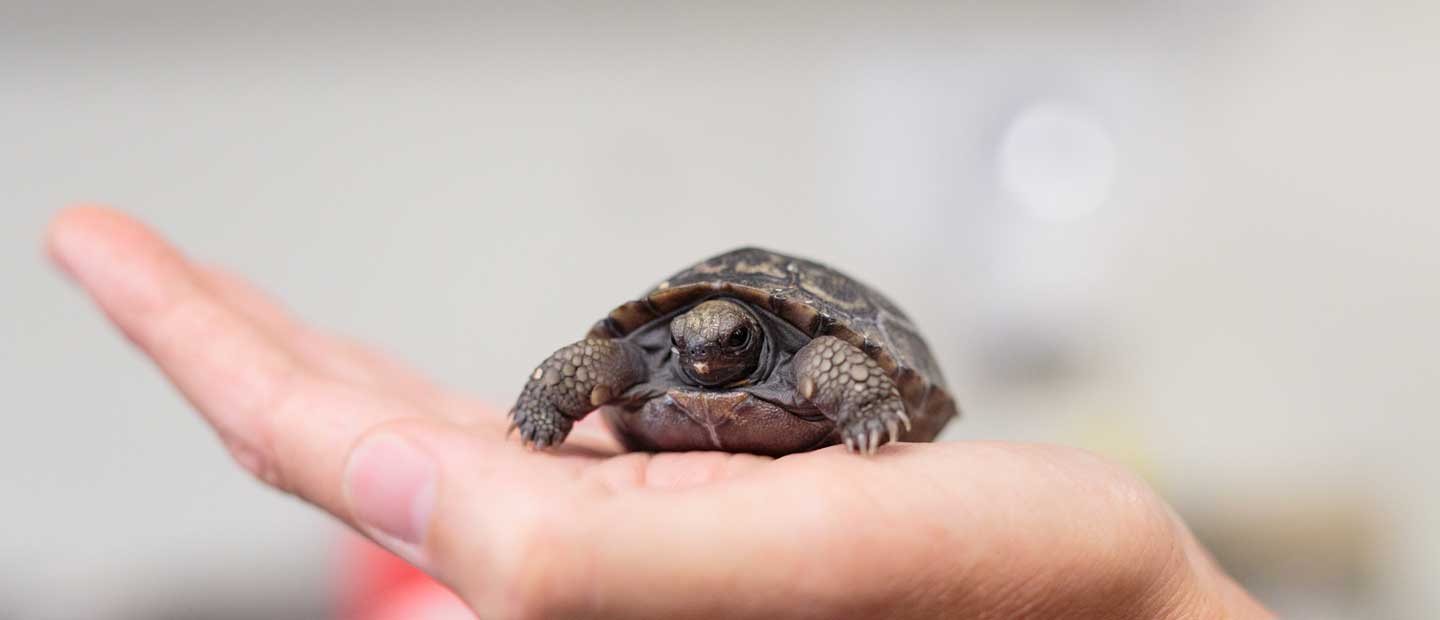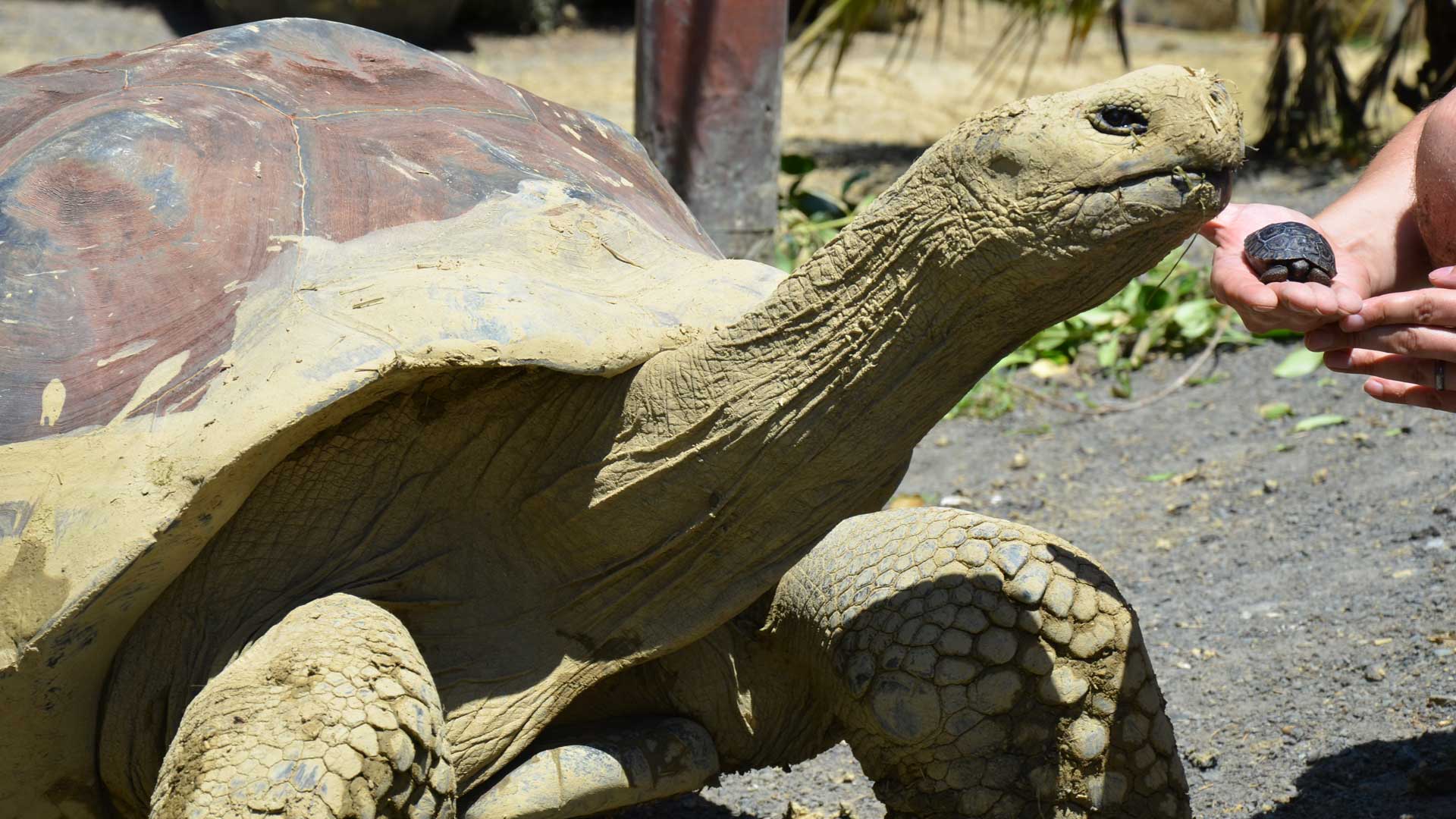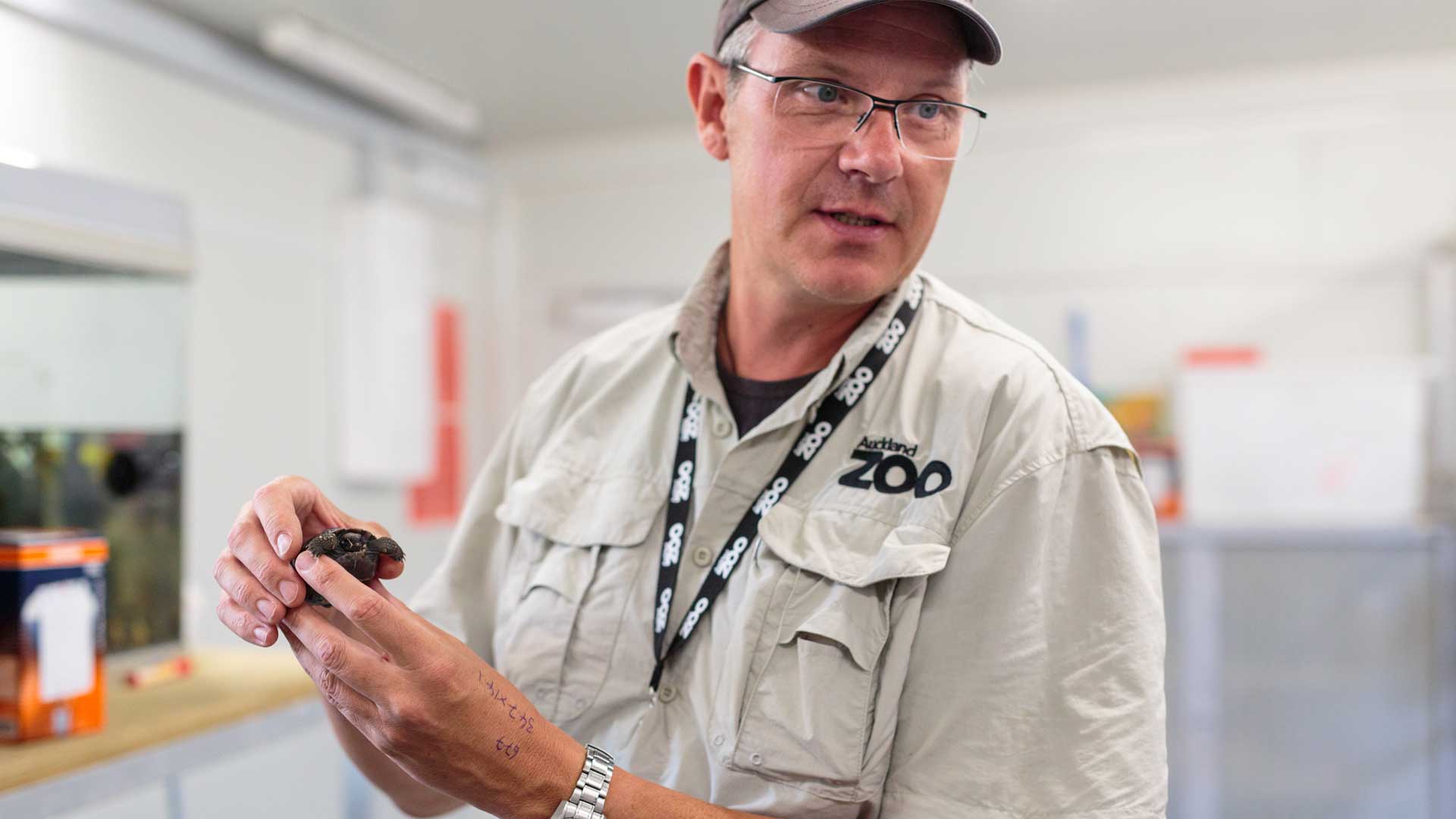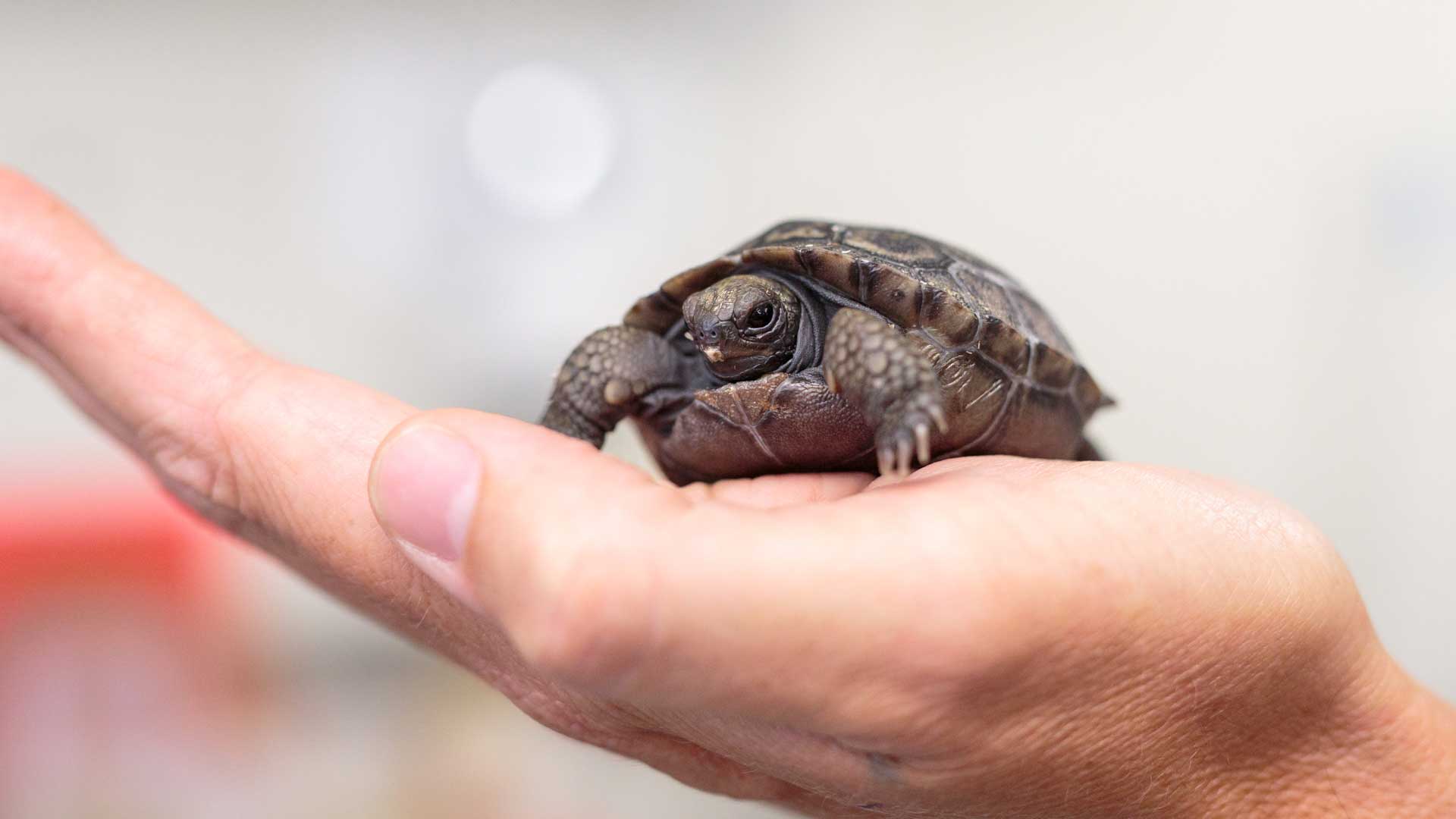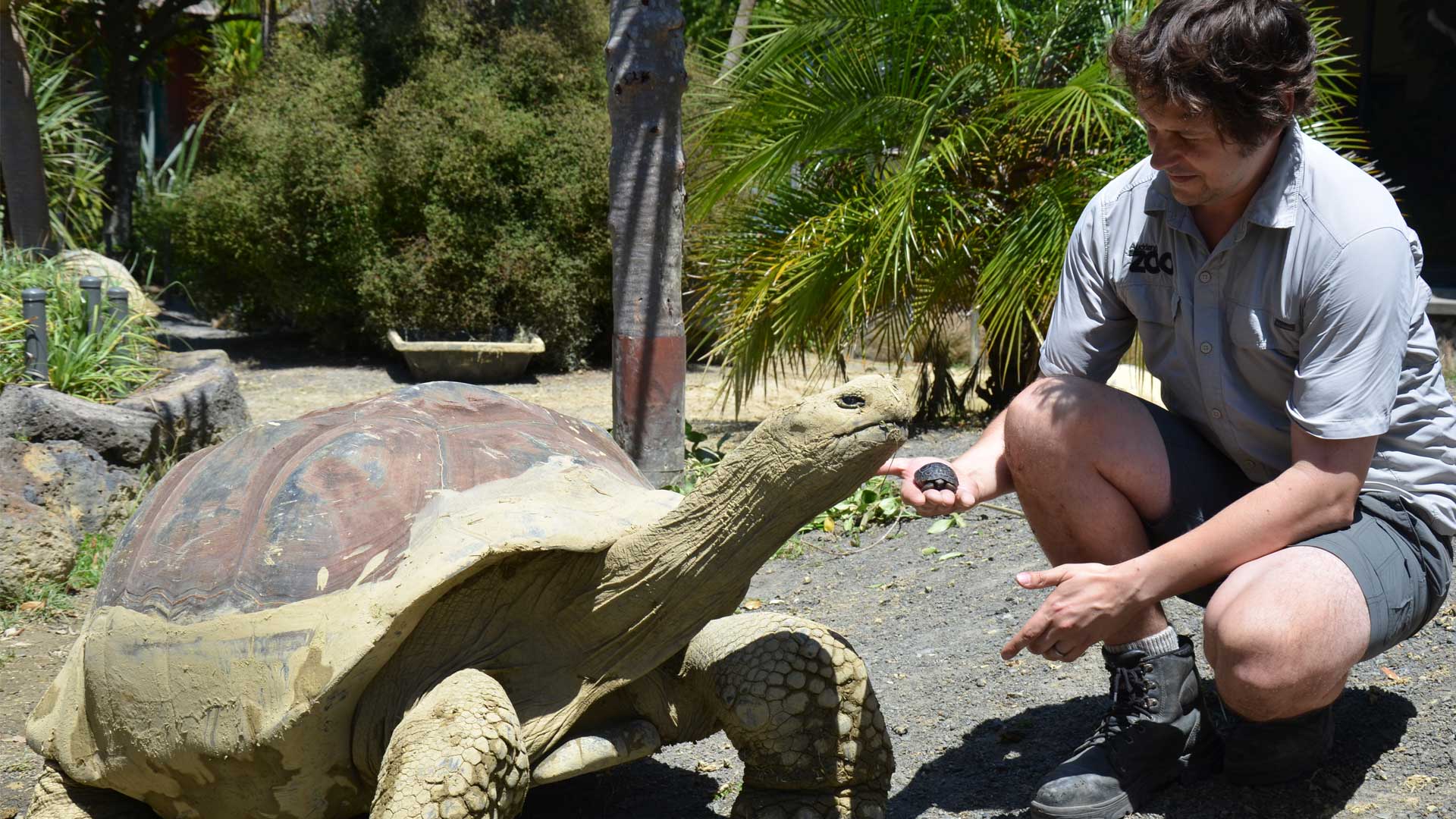In a first for New Zealand, Auckland Zoo is celebrating the arrival of a baby Galapagos tortoise, and has become only the second zoo in Australasia to breed this species.
The tiny tortoise, which weighed in at just 60 grams when it hatched out of a billiard ball- sized egg on 30 December, is the offspring of first-time parents; mum Chippie (47 years) and dad Smiley (46 years) – still youngsters themselves in Galapagos tortoise years.
As the world’s largest tortoise, if this hatchling is a male, he will grow up to 4000 times in body-mass to reach more than 250kg (quarter of a tonne!), and if female to over 2,500 times (one of the largest changes in body mass from newborn to adult of any vertebrate), and could live for over 150 years!


